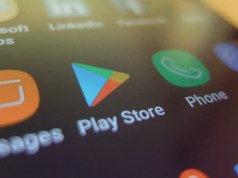NFTs are the evolution of cryptocurrencies, enabling digital representations of physical assets. Blockchain technology enables NFTs to be created and used by anyone, including users of other blockchains. NFTs have multiple uses, including allowing transactions between users, enabling a transparent system for ownership tracing and verification, and allowing users to remain anonymous. Tokens can be used to represent different types of digital goods, including sports tickets and NBA top shots.
Non-fungible tokens are an evolution of cryptocurrencies
Unlike a digital file, which can be copied, non-fungible tokens are unique pieces of digital information that are hard to replicate. These tokens have real world use cases – for instance, Nike uses a non-fungible token to authenticate sneakers. Non-fungible tokens are a form of ownership guarantee and a powerful tool in transactions that require a physical asset. Tokens of this type can also be used to buy or sell a digital asset, such as a physical object. However, these are still in the early stages of development, so you should always remember to use caution and exercise caution.
While standard cryptocurrencies have many advantages, non-fungible tokens have their disadvantages. Non-fungible tokens are not real cryptocurrencies, but they use the same technology as cryptocurrencies, such as the blockchain, to track financial transactions. Non-fungible tokens are unique digital data that guarantee ownership of a specific asset. They are also called “NFTs” and are mostly based on the Ethereum network.
They enable digital representations of physical assets
One of the most popular uses for NFTs is in digital art. Artists upload digital artwork to platforms like Rarible and sell them to collectors who become the new owners of the works. Digital collectibles tied to brands are also gaining traction. Platforms such as Sorare have partnered with the biggest football clubs in Europe to sell digital football cards. Another example is NBA Top Shot, which recently closed a US$305 million funding round.
The idea of tokenizing ownership is not new; modern finance systems are built on sophisticated trading and lending systems. These systems can facilitate the exchange of artwork, lending contracts, real estate, and other physical assets. NFTs are an evolution of this concept, enabling digital representations of physical assets. Although the concept of creating digital representations of physical assets is not entirely new, the use of blockchain and smart contracts to enable them is.
They are based on blockchain technology
The term “NFT” stands for network-wide transaction, and it refers to an entry in the blockchain. This is different than the concept of “blockchain storage” that is often used for storing actual media. Such storage would be extremely expensive, and many people would prefer to use traditional storage methods. In any case, NFT technology is the future of the digital world. Here are three ways to use this new technology.
Blockchain technology allows for immutability and proven scarcity. Blockchain technology allows developers to set severe limits on the supply of NFTs, and it also lets them impose long-lasting properties. Since NFTs are codified in the blockchain, these properties can never be changed once the token has been issued. This is particularly useful for the physical art market. In addition, it’s important to note that blockchain-based technologies are easier to implement than they were in the past.
They are a new type of currency
While many people view NFTs as a digital collectible, others see them as investments. Buying NFTs allows players to purchase assets and experiences from games, including playable assets. While this idea is gaining ground, traditional gamers are hesitant to embrace it. This trend could mean more expensive experiences for players, a level playing field, and easier access to game developers. But with the rise of virtual collectibles, NFTs may be the way to go.
Unlike conventional currencies, NFTs do not have a central bank. They are digital assets that are registered on a blockchain ledger. They are typically represented by digital artwork. Since they are digital, they can be easily duplicated. The value of an NFT depends on market demand, not on its monetary value. If you are an artist, you can sell your NFTs to buyers. You can also sell NFTs, just as you would sell any other type of art.
They are a form of peer-to-peer trading
While most digital assets are limited in supply and can be copied and deleted, NFTs do not. They are stored on blockchains, which are distributed public ledgers that record transactions. Several people have used NFTs to buy and sell art, from artists to computer games. As an example, Twitter co-founder Jack Dorsey sold his first tweet as an NFT for $2.9 million.
The first step in purchasing NFT is establishing a digital wallet. There are several options for a digital wallet, such as Coinbase, Gemini, Metamask, and Binance. It is a good idea to get a wallet that supports several cryptocurrencies before you begin buying. Using a digital wallet makes it much easier to keep track of your finances and manage your finances, and most NFT marketplaces are supported by both Coinbase and Ethereum.








